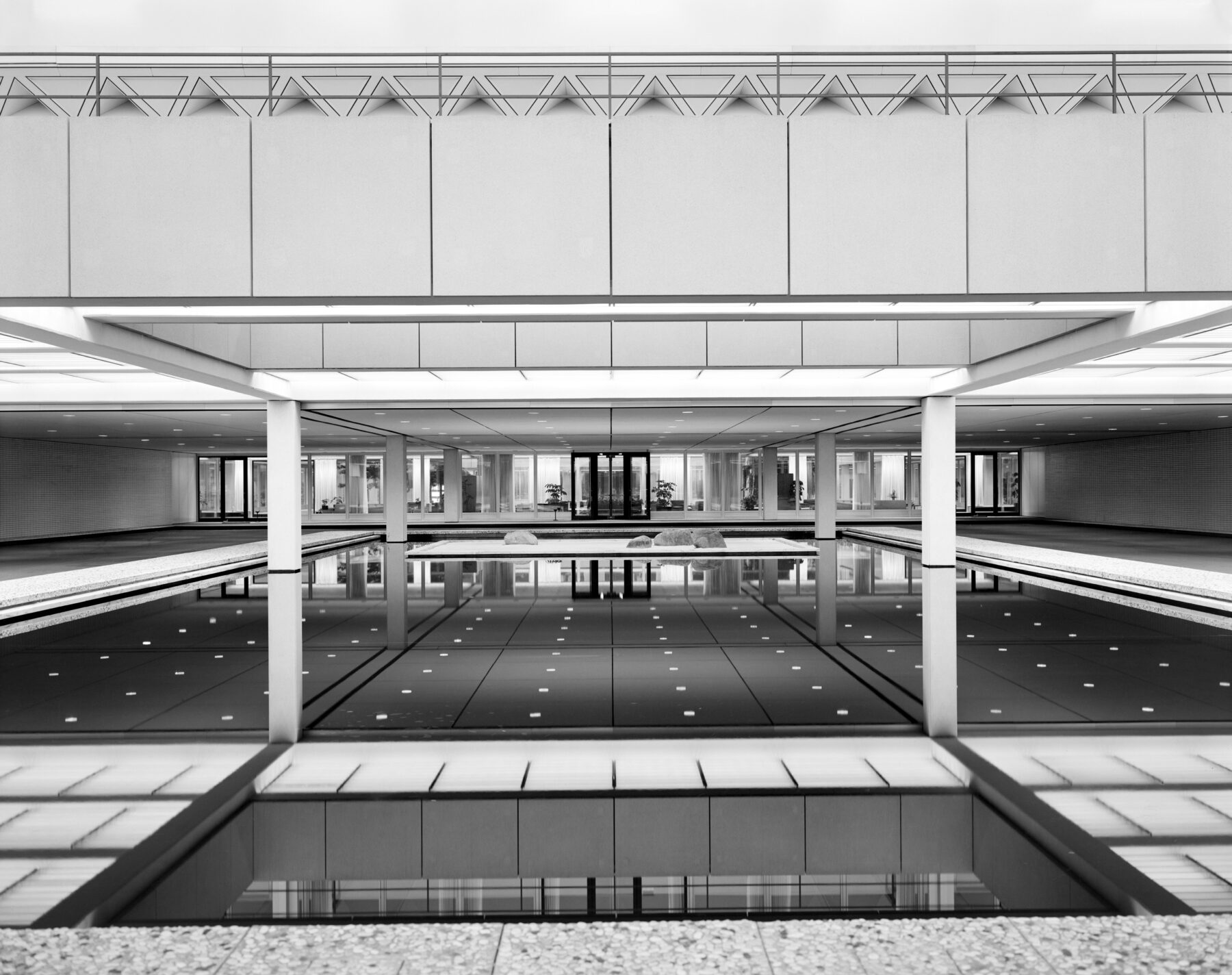The Future of Cities: Building on 70 Years of Better Design, Together
As we plan for ever-changing futures, discover Sasaki's past and present work in cities around the world

Our founder, Hideo Sasaki, collaborated with architects at the pinnacle of their profession in the mid-20th century, and designed places that radically blended the two disciplines. This article studies three modernist campuses that feature true collaborations between architects and landscape architects: Upjohn Company, John Deere, and Bell Laboratories.
Postwar corporate campuses were an important proving ground for architects to demonstrate the core principles of modernist design: that form should follow function, and that the honest expression of building materials should put their inherent qualities on display. Because corporate campuses in this era were also seen as rural oases, set apart from their urban high-rise counterparts on large plots of land, landscape design played an essential role in the expression of place. In many cases, the architectural expression of a modernist corporate campus required that it borrow some drama from its surrounding landscape. And, in some cases, this meant bringing the outside in.
In this article, we examine three different modernist corporate campuses that feature true collaborations between architects and landscape architects. A key landscape design figure in the modernist era was Hideo Sasaki, who made a name for himself during the mid- to late 1950’s by collaborating with some of the most notable architects of the time. His collaborations spanned many different project types and scales, from single family residential to civic buildings and plazas to corporate campuses.